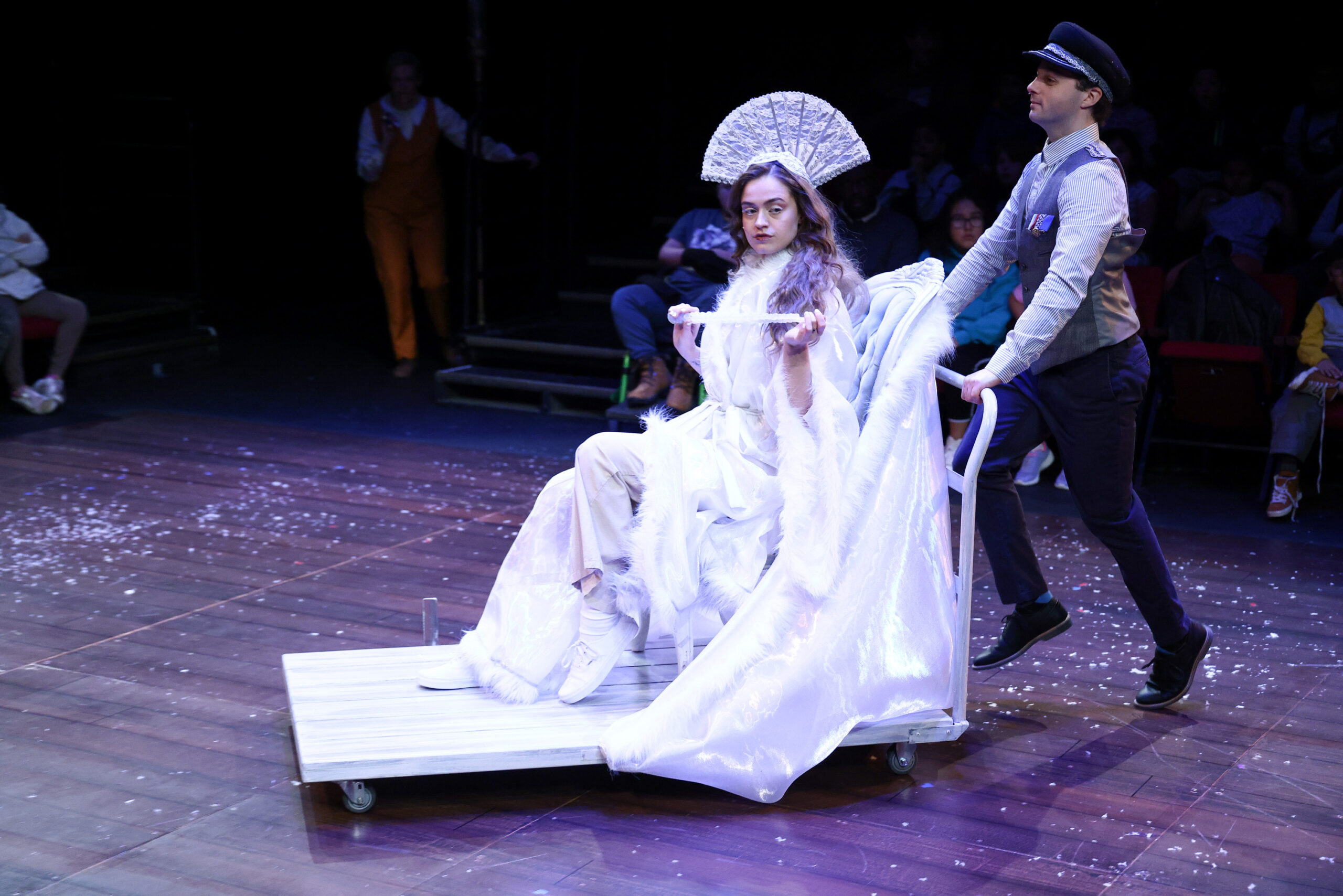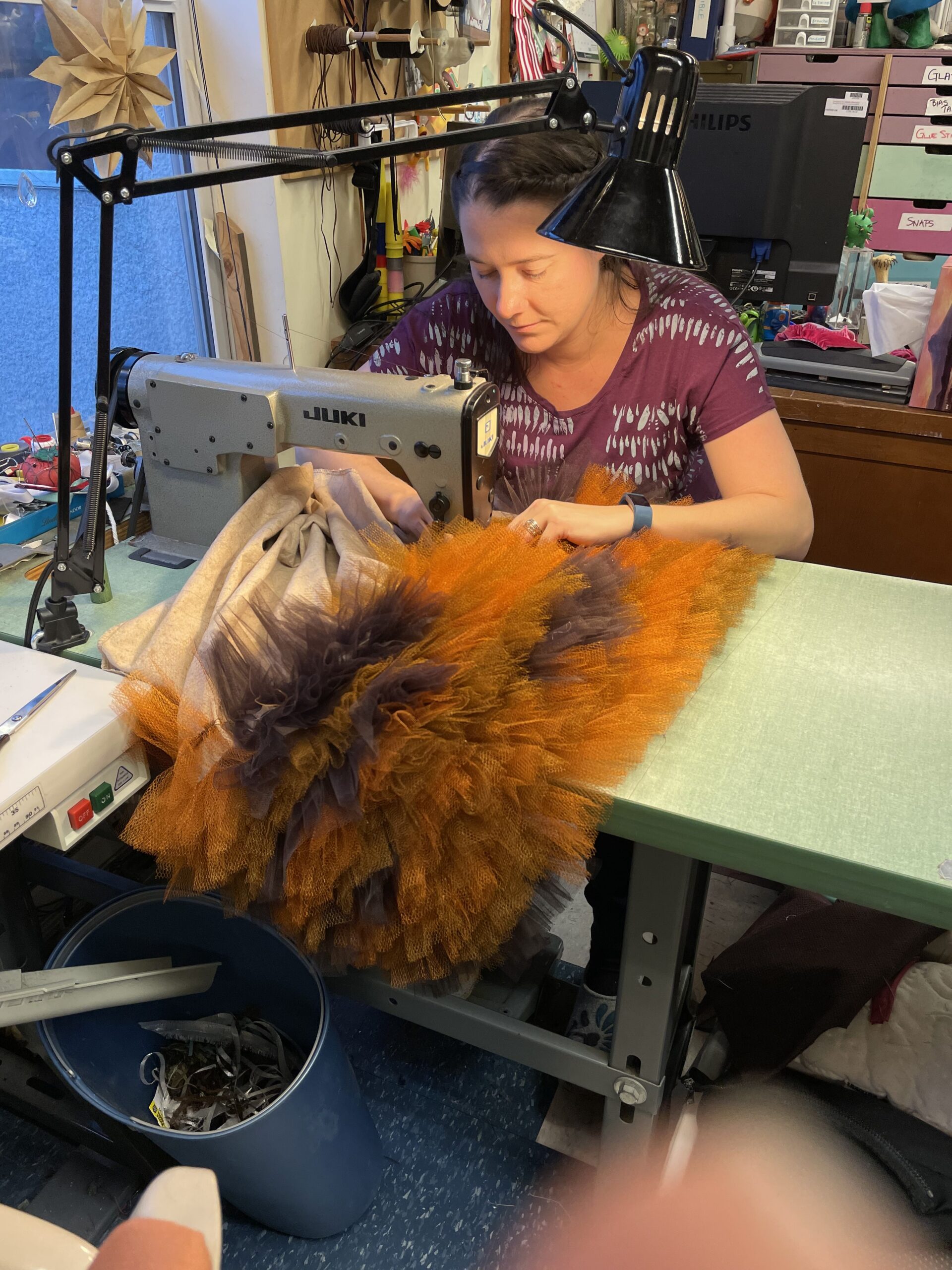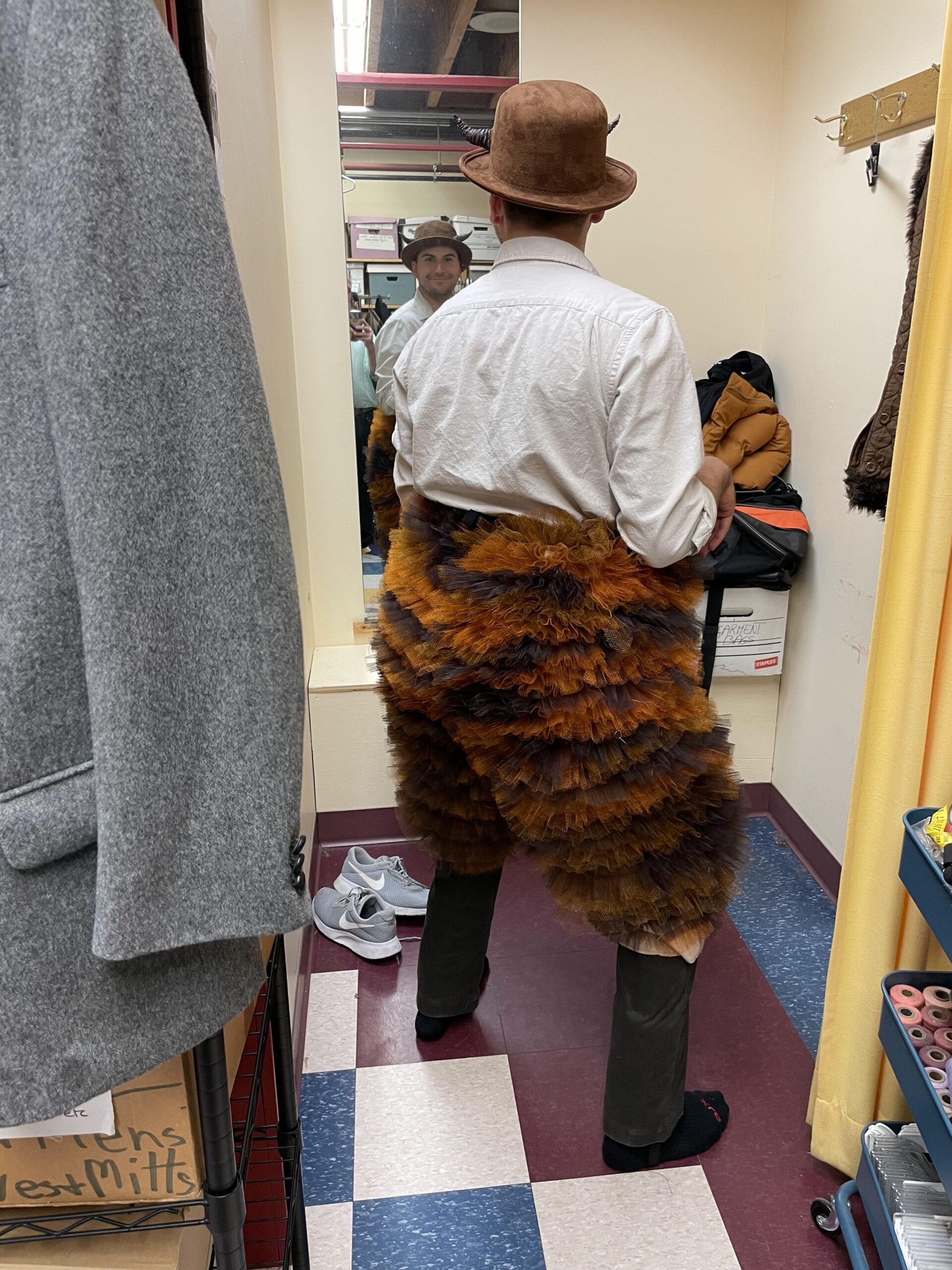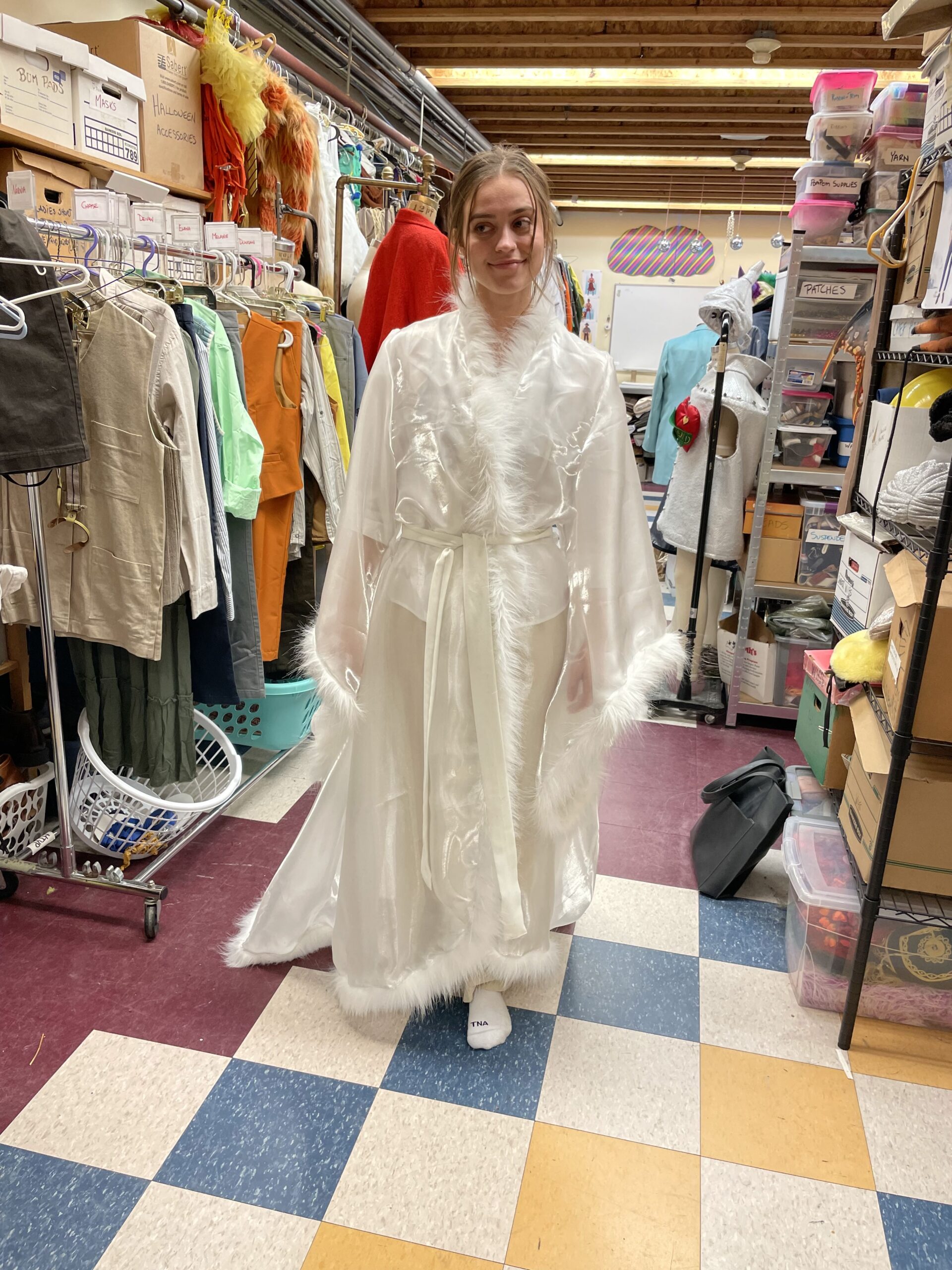
THROUGH THE WARDROBE
This December, MTYP is inviting audiences to head through the wardrobe, with its imaginative and creative adaptation of Narnia as written by Bad Hats Theatre. Part of the imagination that audiences will get to enjoy is in the world that is built by the creative team, whether it’s the props, the sets, or the costumes. In a play where nine actors are playing fifteen different characters, the costumes take on an even greater significance as a way of letting the audience quickly know who is in the scene.
Two of the most whimsical costumes in the production are that of the malevolent White Witch and the lovable faun, Mr. Tumnus. To take you behind-the-scenes into the making of them, we spoke with two of the talented artists who worked on Narnia: Toronto-based costume designer Julia Kim, and MTYP Head of Wardrobe Kevin Maguire.
When asked about her inspiration for the White Witch, Kim shared that it came when, “I looked through what could be found in a closet or wardrobe and chose a nightgown with fur trim and a white lace fan to use as a headdress.”
The character is regal, slightly untouchable. C.S. Lewis actually described the Witch’s face as ‘white as paper’.
Maguire, who built the costume, says, “The fabric is organza and the trim is fun fur. The organza has a certain glisten, an icy feel to it.” Fun fur was chosen over marabou (a soft fluffy material made from turkey feathers, like a boa), because its is easier to sew and doesn’t shed as much. “The costume creates that moody feel,” Maguire continued.
Mood was more important than historical accuracy. Overall, Kim says she was trying to stay away from the show’s theatrical elements, like costumes or sets, being tied to any specific time period.
When taking the drawings and designs and bringing them to life, surprises can come up along the way. For instance, the Witch’s white lace fan that is used as a headdress, proved challenging to keep from flying off during the high energy production. “Elena Howard-Scott [the actor playing the role] brought in an awesome wig and the headdress just clips onto her own hair, so that the wig actually holds it in place,” explained Maguire.
The character of Mr. Tumnus is the first friend Lucy Pevensie makes when she enters the magical kingdom through the wardrobe. In the books, ,C.S. Lewis described Mr. Tumnus as having reddish skin, curly hair, brown eyes, a short pointed beard, horns on his forehead, cloven hooves, goat legs with glossy black hair, a “strange but pleasant little face,” a long tail, and being “only a little taller than Lucy herself.
“To create Mr. Tumnus’ silhouette, I looked for ways to create a large shape without making it too heavy,” says designer Kim. “I knew that people sometimes use tulle to create a body form or add volume to garments, so that’s what we did.”
“Its layers and layers of tulle, put together like a tutu would be assembled, but it’s not finished like a tutu or sculpted like a tutu,” adds Maguire, who spent more than a decade working in the Royal Winnipeg Ballet’s Wardrobe Department, and has crafted more than a few swans.
“Working with so much fabric in one piece can create a lot of weight, but it’s not as heavy as I worried it might be,” says Maguire. “We had to sculpt the fabric down so that he isn’t walking around bow legged. And do it in such a way so that when he sits and stands up it’s not going to look crushed or flat.” Maguire says Mr. Tumnus’ costume “is supposed to be a fuzzy, big butt, and fun to look at.” It was also important that it not be too literal an interpretation of a faun.
This aligns with how Kim describes her concept for the entire production. “We wanted to create Narnia with found household objects, as if the children were playing Narnia when they were stuck inside due to the rain.”
Narnia is one of the largest productions that Kim has worked on, but the work of a designer is consistent regardless of scope or scale. “One of my jobs as a designer is to translate the conceptual ideas into technical drawings so that the production staff can execute the designs to life.” The actors, director and stage management then work with those brought to life designs in the rehearsal hall, testing them out before going into performance. “So, a big part of the process,” Kim continues, “is relaying information from the rehearsal hall to the production team.”
As a part of that production team, Maguire knows that his job, which frequently involves shopping for fabric, and notions, and even clothing fully completed clothing items, sounds like a lot of fun. “Everyone thinks that mine would be a dream job,” he laughs. “But shopping can be exhausting! When you are out and about all day and not finding quite the right piece, it is tiring.”
He provided further examples. “For every show, I have to buy the right shoes for the actors,” he continues. Taking into account the designer’s vision, he also has to consider the actor’s preferences, physical considerations, and how they are expected to move in the costume element, like shoes. “Sometimes you don’t get it right. Fortunately, for this show, that only happened once. I went back and found something else and it worked.”
For her part, Kim says that as the production’s designer, “I am happy with the final results and the look of the show! It was a great pleasure designing Narnia and working with everyone at MTYP.”
Come see for yourself how this and all the other elements of the production came together. Narnia is running on MTYP’s Mainstage until December 23. Tickets available online, here.




